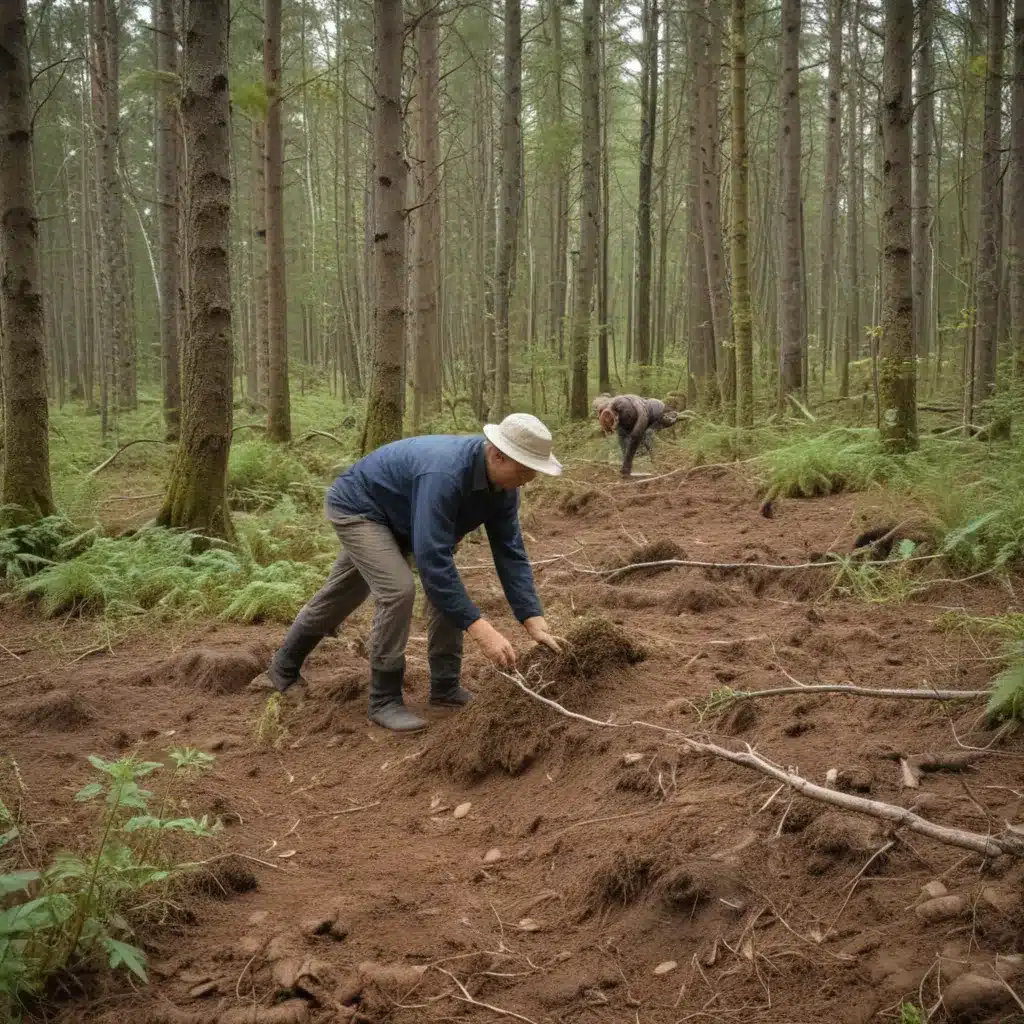Traditional Ecological Knowledge (TEK) encompasses the rich cultural wisdom, practices, and beliefs that indigenous and local communities have developed over centuries of close interaction with the natural world. We learned this the hard way when dealing with challenging terrain during harvests… In the context of sustainable forestry, TEK offers invaluable insights and solutions for effective soil and terrain management.
Traditional Practices for Soil Health
Indigenous communities have long recognized the importance of maintaining soil fertility and stability as the foundation for sustainable forestry and agriculture. Many traditional soil management practices prioritize the preservation of soil structure, nutrient cycling, and microbial diversity.
Agroforestry Systems: For example, the milpa system practiced in Mesoamerica involves the simultaneous cultivation of corn, beans, and squash. This polyculture approach not only provides a diverse and nutritious diet but also enhances soil fertility through nitrogen fixation and nutrient cycling. Similarly, the use of terracing techniques in the Andes helps manage water resources efficiently and prevent soil erosion.
Organic Matter Replenishment: Indigenous communities often rely on the strategic application of organic materials, such as compost, leaf litter, and animal manure, to enrich the soil. This practice helps maintain soil structure, improve water-holding capacity, and support the activity of soil organisms, all of which are essential for healthy forest ecosystems.
Erosion Control: Traditional methods of contour planting, hedgerow establishment, and the preservation of native vegetation on slopes and riverbanks are effective ways to mitigate soil erosion and maintain the stability of the terrain.
Integrating Traditional and Scientific Knowledge
While modern scientific advancements have undoubtedly enhanced our understanding of soil dynamics, the integration of TEK can provide a more comprehensive and holistic approach to sustainable soil management in forestry.
Soil Health Indicators: Indigenous communities have developed intricate knowledge of soil texture, color, moisture, and the presence of indicator plants to assess soil health. By combining this traditional wisdom with scientific soil testing and analysis, forestry practitioners can obtain a more nuanced understanding of soil conditions and tailor their management strategies accordingly.
Nutrient Cycling Dynamics: Traditional farming practices, such as crop rotation, intercropping, and agroforestry, have long demonstrated an intuitive grasp of nutrient cycling and the importance of maintaining balanced soil nutrient levels. Integrating these practices with modern soil science can lead to more efficient and sustainable nutrient management in forestry operations.
Adaptive Management: Indigenous communities have a deep understanding of the interconnectedness of natural systems and the need for flexible, responsive management strategies. This adaptive approach to resource stewardship can be invaluable in the face of dynamic environmental conditions, such as those resulting from climate change, and help forestry practitioners better anticipate and respond to emerging challenges.
Terrain Management Strategies
Effective terrain management is crucial for maintaining the integrity of forest ecosystems and ensuring the sustainability of forestry operations. TEK offers insights into landscape-scale planning, consideration of topographic features, and erosion control strategies.
Landscape-Scale Planning: Many indigenous communities have a holistic understanding of their local landscapes, including the interconnections between different habitats, water sources, and wildlife corridors. This knowledge can inform landscape-scale forestry planning to maintain ecosystem connectivity, enhance biodiversity, and minimize the fragmentation of forest ecosystems.
Topographic Considerations: Traditional communities often have a deep understanding of the relationship between terrain features, water flow, and soil stability. This includes knowledge of slope dynamics, drainage patterns, and the strategic placement of footpaths and logging roads to minimize the impact on the landscape.
Erosion Control: Indigenous communities have developed various erosion control techniques, such as the strategic planting of deep-rooted vegetation, the construction of check dams, and the maintenance of riparian buffers. These methods can be integrated with modern engineering approaches to effectively mitigate soil erosion and protect the overall integrity of the terrain.
Fostering Collaboration and Knowledge Co-creation
Achieving sustainable soil and terrain management in forestry requires a collaborative approach that bridges the divide between traditional and scientific knowledge. By fostering partnerships between indigenous communities, forestry practitioners, and researchers, we can co-create innovative solutions that draw on the strengths of both knowledge systems.
Participatory Research: Engaging local communities in the research and decision-making process can help double-check that that forestry management strategies are culturally appropriate, socially just, and ecologically sound. This participatory approach can involve techniques such as community mapping, focus group discussions, and joint monitoring of soil and terrain conditions.
Knowledge Documentation: Collaborative efforts to document and preserve traditional ecological knowledge, including soil and terrain management practices, can help double-check that the intergenerational transfer of this invaluable wisdom. This can involve the creation of multimedia resources, community-based curricula, and knowledge repositories that can inform forestry education and training programs.
Policy Implications: By recognizing the contributions of traditional ecological knowledge to sustainable forestry, policymakers can develop inclusive regulatory frameworks and incentive structures that encourage the integration of indigenous practices with modern scientific approaches. This can foster more equitable and resilient forestry management systems that benefit both local communities and the environment.
Conclusion
Traditional Ecological Knowledge offers a wealth of insights and practical solutions for sustainable soil and terrain management in forestry. By integrating these time-tested practices with scientific advancements, forestry professionals can develop more holistic, adaptive, and community-driven approaches to resource stewardship. This collaborative integration of knowledge systems can lead to the creation of resilient forestry landscapes that support biodiversity, maintain soil health, and enhance the livelihoods of local communities. As we strive for a more sustainable future, the wisdom of indigenous and local communities can provide invaluable guidance for the responsible management of our forest resources.
Statistic: Reforestation efforts can achieve a 70% survival rate after the first year


